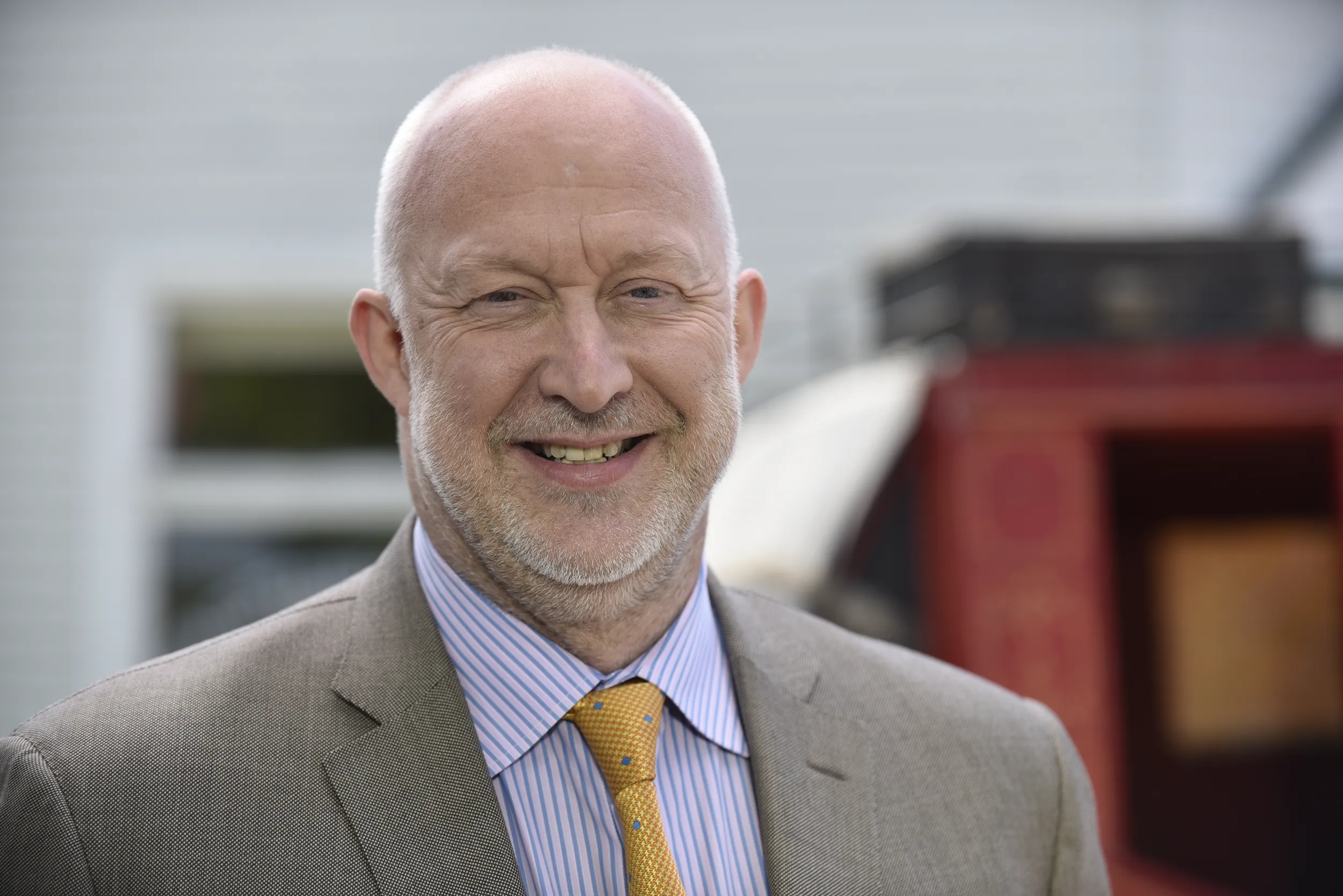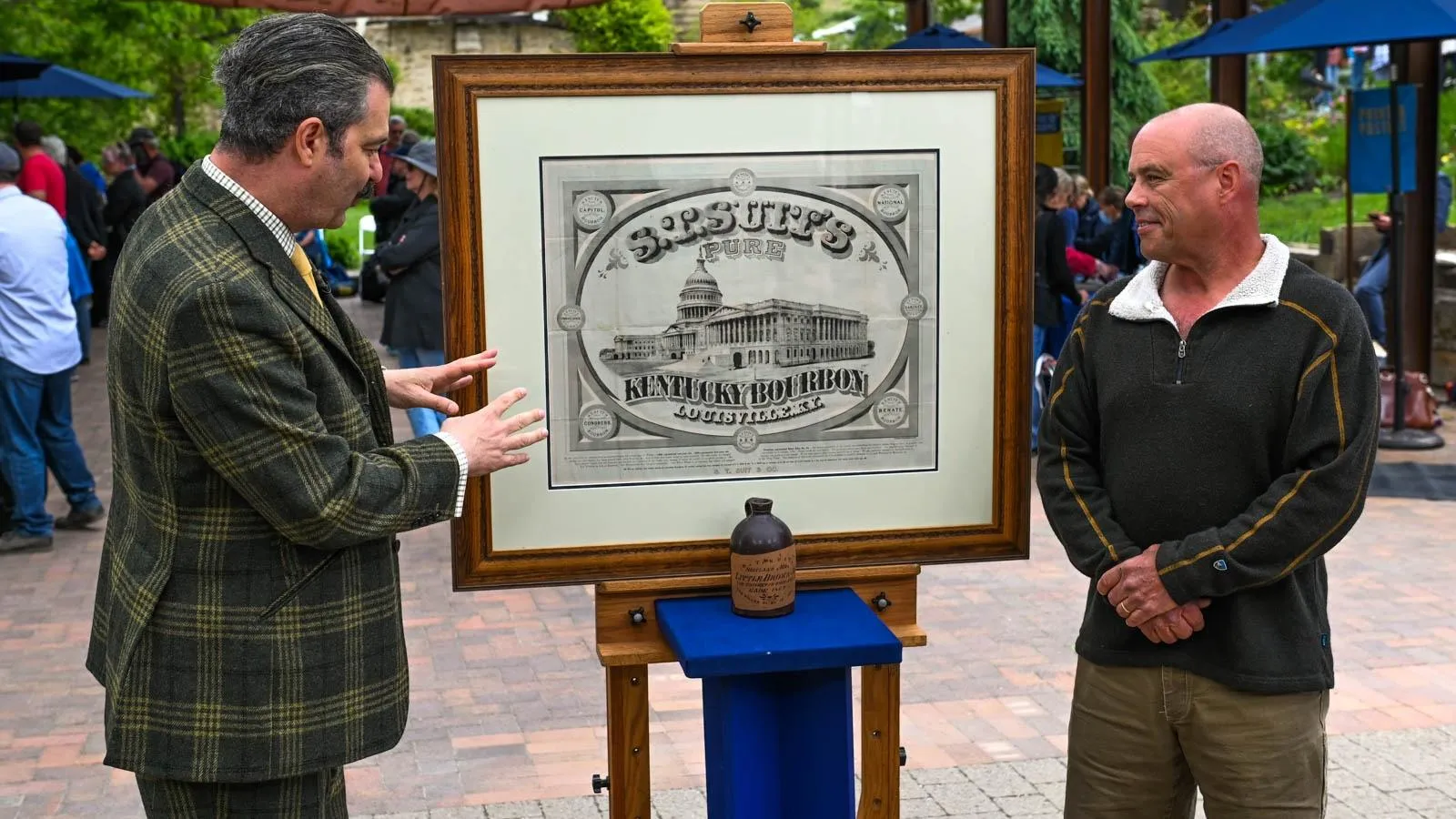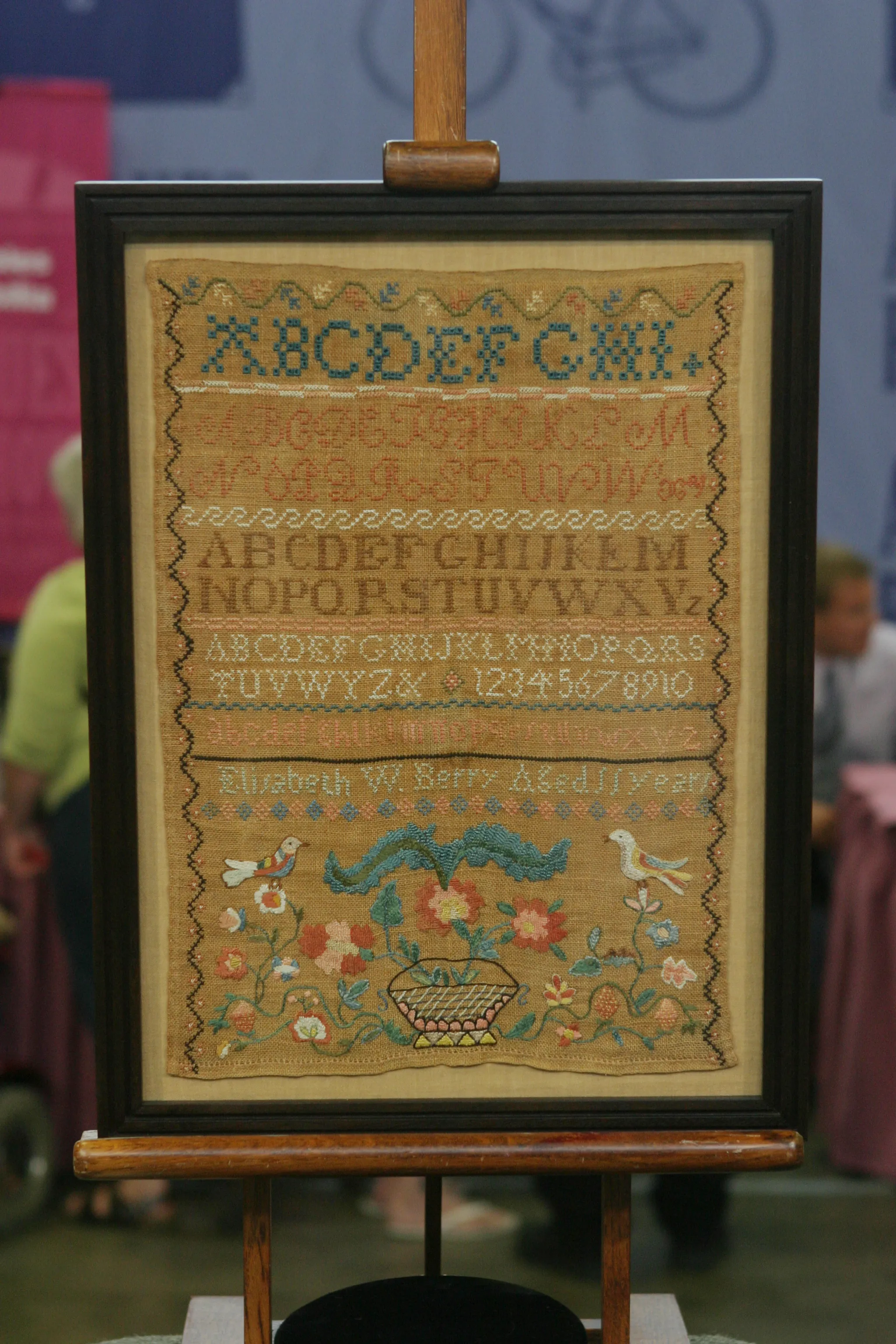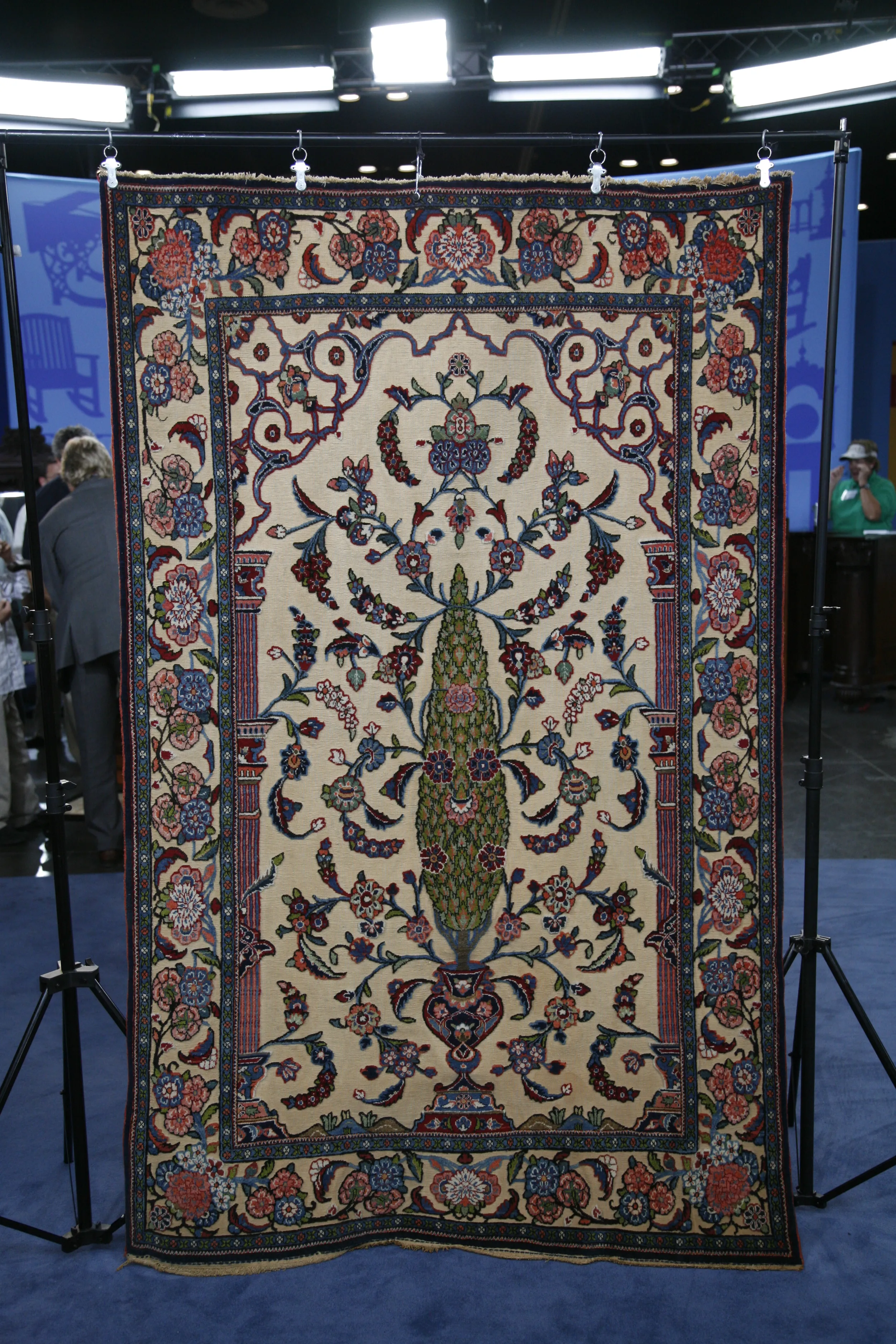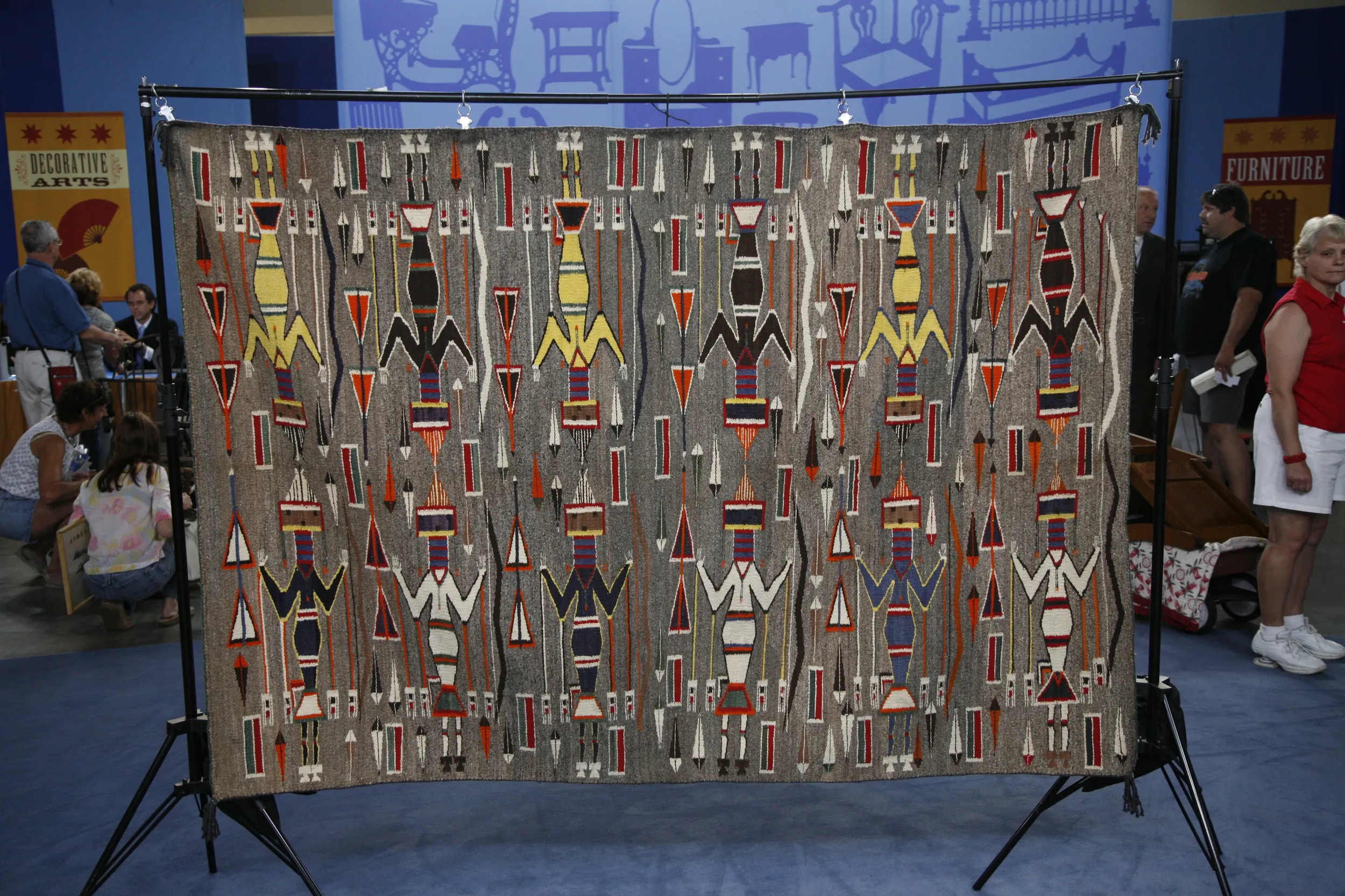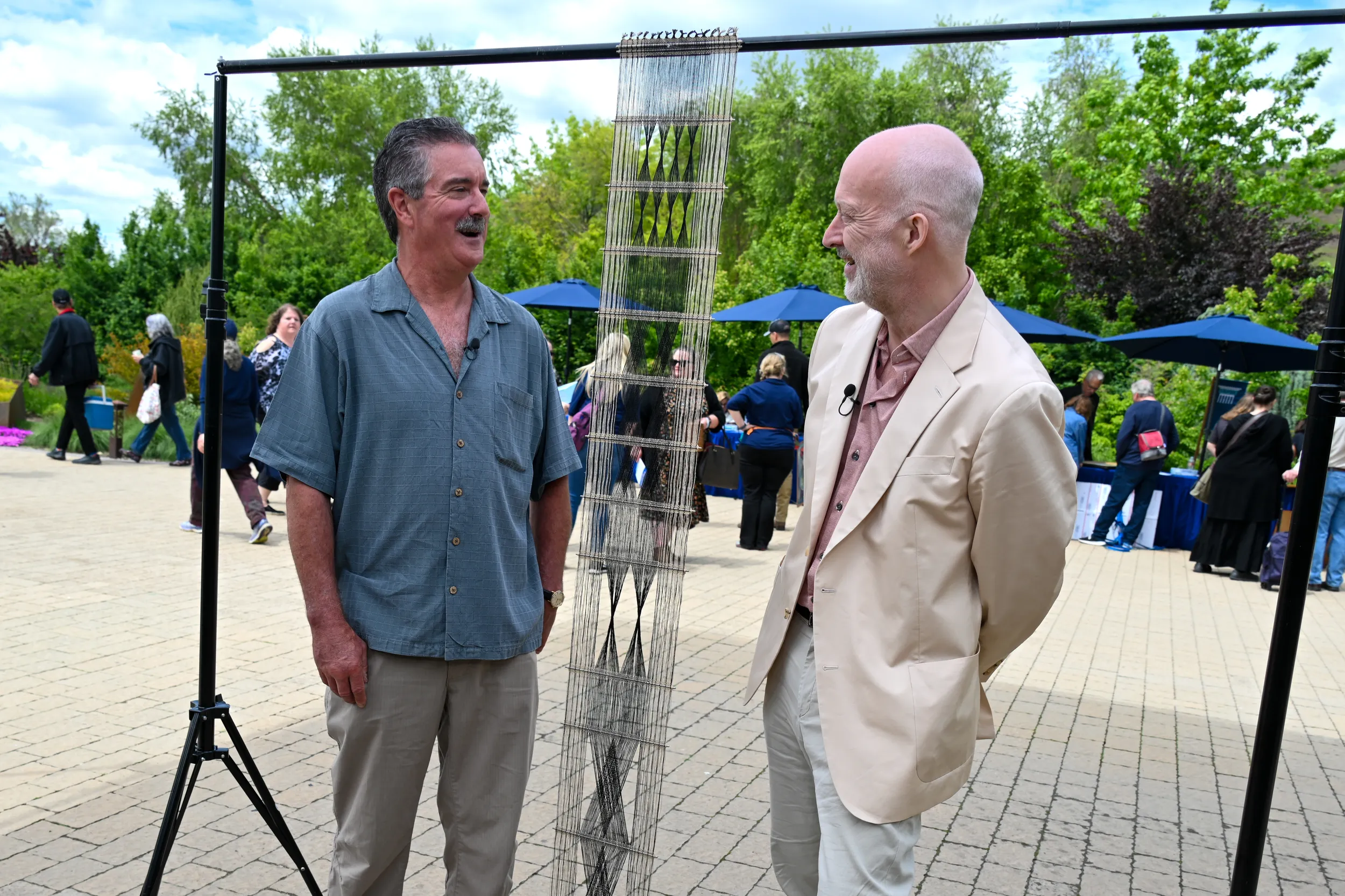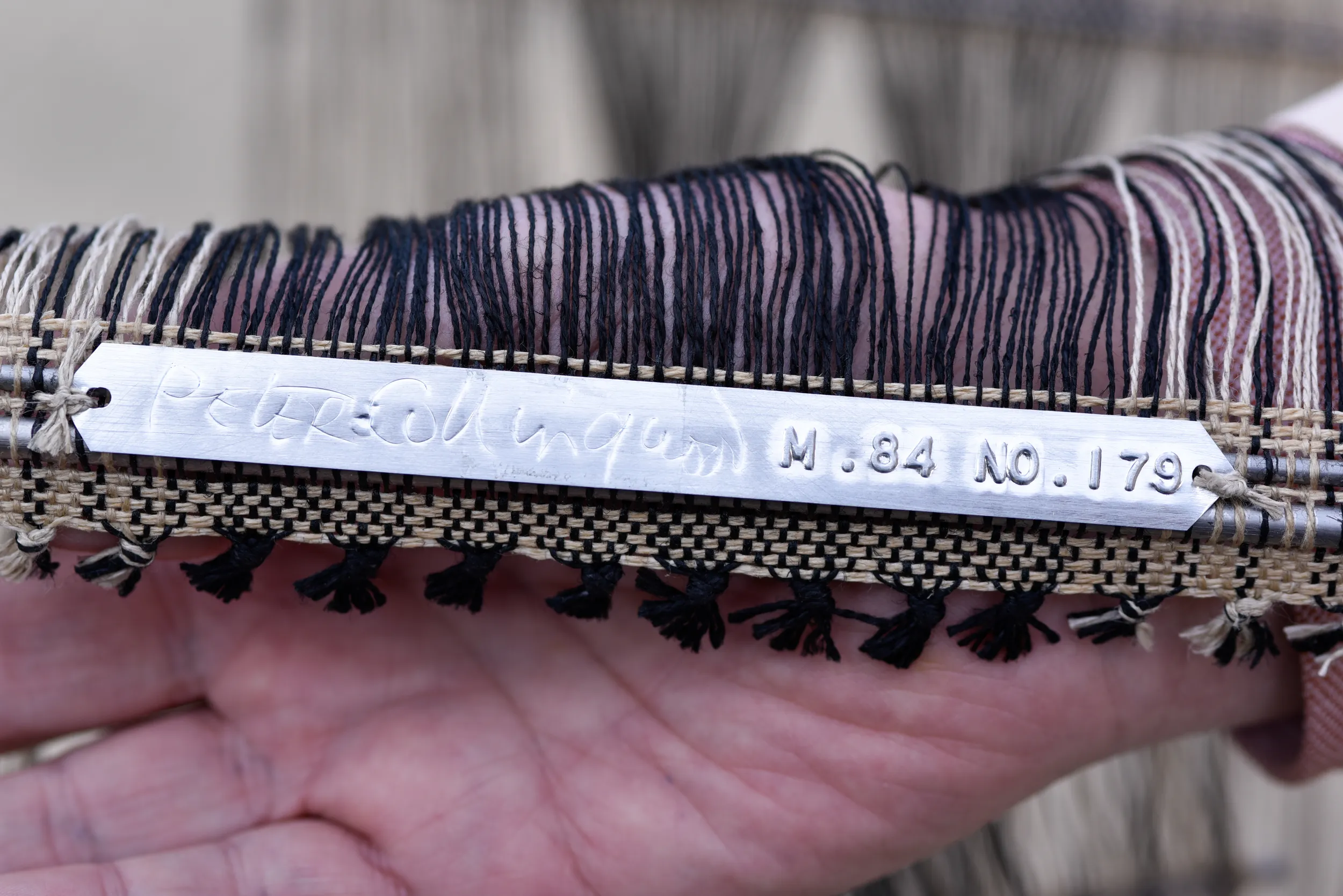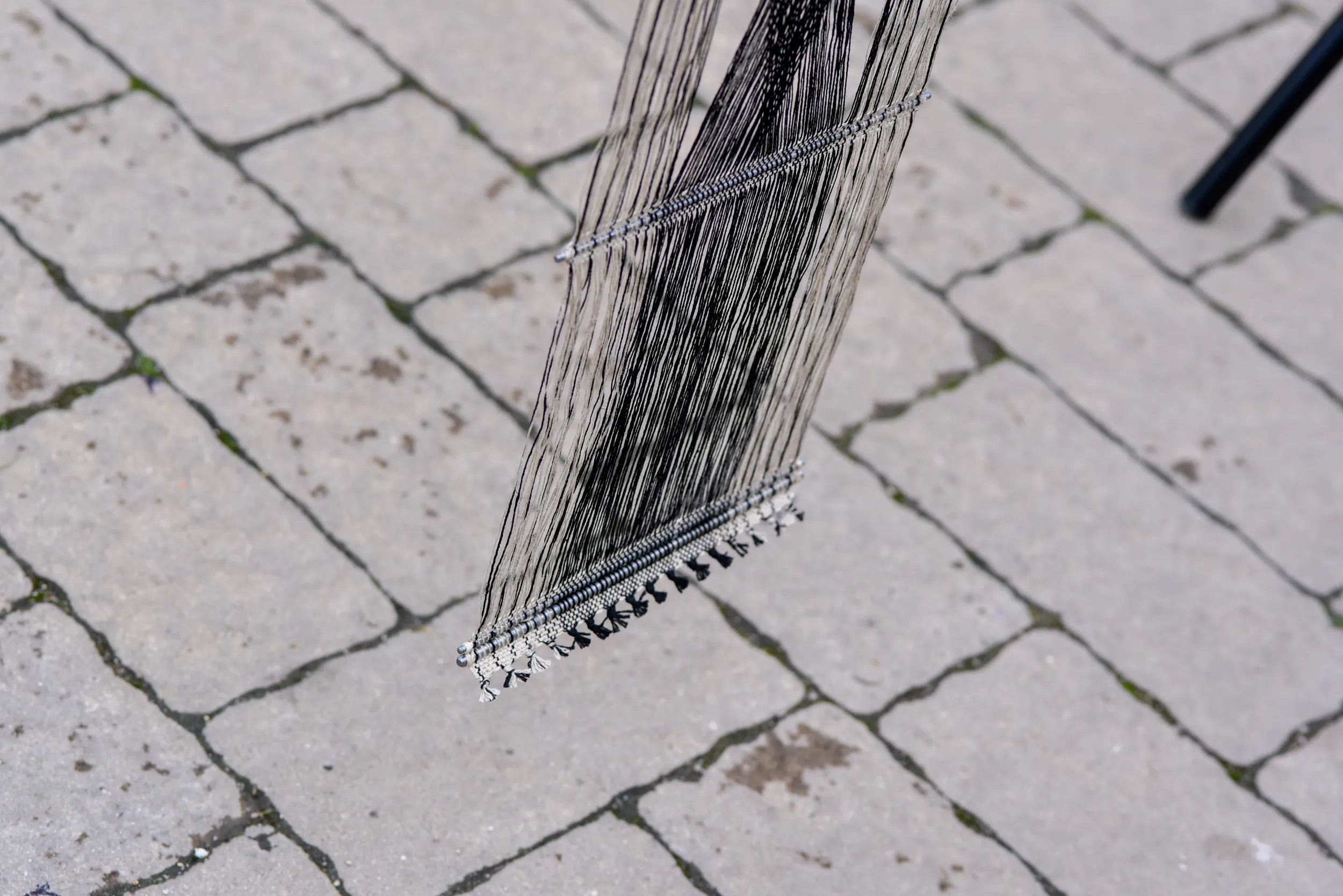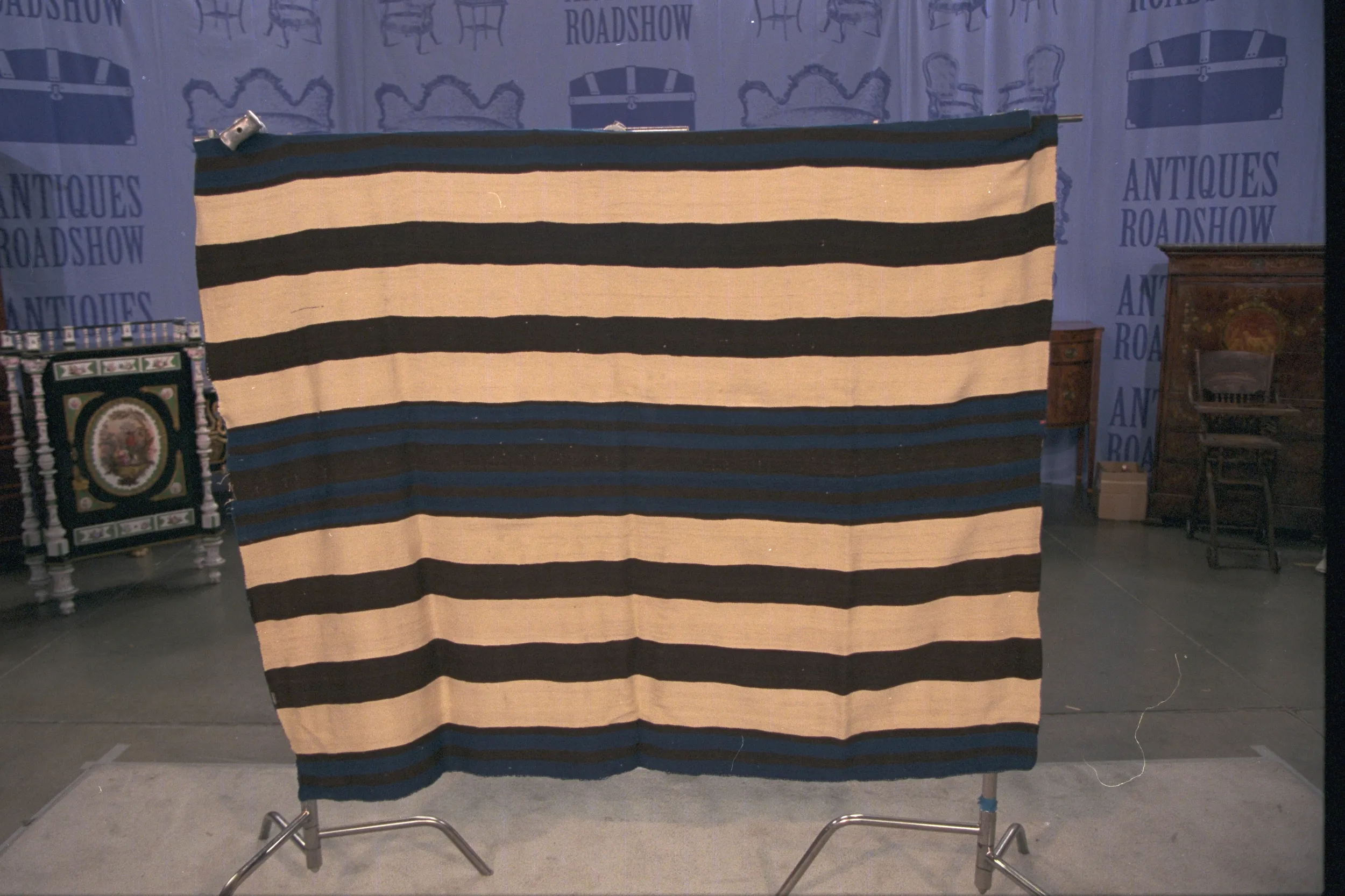APPRAISER: It's, uh, the most unusual piece that I've filmed for the ROADSHOW in, what, 20 years or so.
GUEST: Oh, really?
APPRAISER: Uh, because usually, I do paintings or drawings, and it's on an easel or whatever, but here we have a weaving.
GUEST: It was purchased, uh, at an estate sale. It was with some other fabric on a rolled tube, and that was inside of it until it got home. That's all I knew, that it was some sort of macramé or... I didn't know what it was. My wife and I, we found the, uh, name and the number on the bottom, so we looked into it a little more, and found out that the guy is an artist who's done other pieces.
APPRAISER: Right, who was the guy?
GUEST: Peter Collingwood?
APPRAISER: Peter Collingwood. And do you know anything about him? Did you do any further research?
GUEST: Said he was British.
APPRAISER: You're quite correct, he was British. He was born in London in 1922. And he was destined to be a doctor, in fact.
GUEST: Hm.
APPRAISER: But life takes strange turns, and...
GUEST: We know that.
APPRAISER: (chuckling): And during his National Service, he was stationed in Jordan, and there he discovered his true passion, which was weaving. To the extent that he used to break up deck chairs and make looms out of them, and then create scarves for the officers' wives. But also when he was there, he was given a gift of a Bedouin tent hanging, and that became quite a talismanic piece for him, and influenced a lot of the, the work that he did after. So he gave up on being a doctor, came back to Britain, he studied with one of the leading weavers of that time, whose name was Ethel Mairet. (chuckling): She said-- a little unkindly, I thought-- he was the dullest man she ever met.
GUEST: (laughs)
APPRAISER: But what piqued her interest was, he was a man and he was interested in weaving, and they were pretty scarce at that time. So he was an unusual chap in that, in that regard. He broke, really, away from traditional looms and working in looms. And literally broke away from them, because he would, rather as he did with the deck chairs, he would break them up and then he would rebuild them. And that allowed him to do all sorts of inno, innovative things. And this would have been around the, the 1960s or so. And that's when he started doing a series of these works. And these were called macrogauzes. I would place this around 1970. It's what we would describe as a, as a mixed-media weaving. He really was known as the pre-eminent weaver in Britain in the latter part of the 20th century. I saw maybe 30 or so, 30, 40 have appeared at auction.
GUEST: Hm!
APPRAISER: But it's, it's, it's a very niche market.
GUEST: Sure.
APPRAISER: Have you given any thought as to the value of this piece?
GUEST: My wife and I, we've guessed about it. I was thinking $200 or $300.
APPRAISER: Okay. And you paid how much?
GUEST: So it was either five or ten.
APPRAISER: Would you be happy to hear that at auction it would probably fetch between $5,000 and $8,000?
GUEST: I... would like to hear that again. (chuckling): Really.
APPRAISER: $5,000 to $8,000.
GUEST: That's outstanding.
APPRAISER: I do need to put that in context.
GUEST: Okay.
APPRAISER: Virtually everything that has sold by him has sold in the U.K.
GUEST: Oh, really?
APPRAISER: And usually in design auctions. And that's really where the market is. And in fact, one of the macrogauzes sold for as much as $34,000.
GUEST: Wow. It'll hang on our wall as long as the cats don't get it.
APPRAISER: You've got cats?
GUEST: It's... Yes. It, it's hung high enough, they can't get it.
APPRAISER: Keep the cats very far away from it.
GUEST: (laughing): We will.
